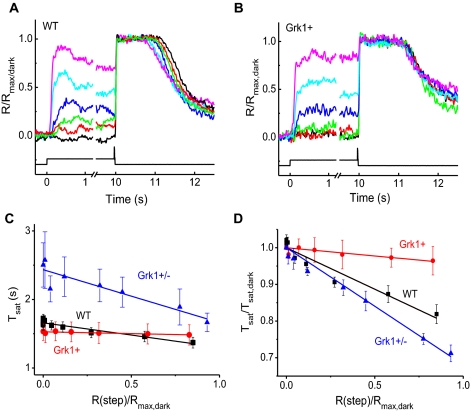Figure 5.
The effect of background light on the shut off of saturating responses was tested by the step-flash protocol, where steady background lights of various intensities were delivered to lower the rod's calcium, followed by a saturating test flash of fixed intensity. Typical response families of (A) WT and (B) Grk1+ rods. Background light shortened the time in saturation robustly for WT rods, but had little to no effect in Grk1+ rods. (C) Duration in saturation (Tsat) of the test flash as a function of step light amplitude for WT (black; n =10), Grk1+ (red; n = 7), and Grk1+/− (blue; n = 6) rods. (D) Plot of Tsat normalized to its dark-adapted value (Tsat,dark) as a function of step light amplitude for WT (black), Grk1+ (red), and Grk1+/− (blue).

